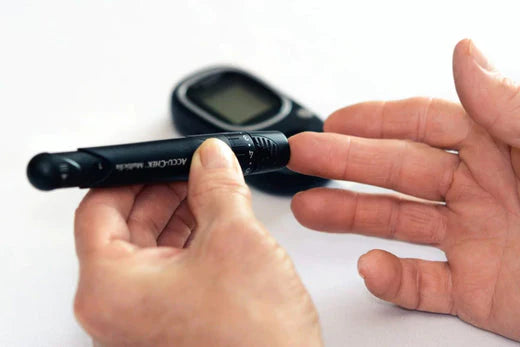Introduction
Mature insulin is a protein of 51 residues (21 in A chain and 30 in B chain) produced in specialized beta cell islet of the Langerhans in the pancreas. Insulin binds on transmembrane tyrosine kinase receptor (insulin receptor) present in liver, muscle and cells in the fat tissues and stimulates increase glucose uptake from blood and converts it into glycogen to store in the liver and muscles. Insulin regulates carbohydrate and fat metabolism in the body. Failure to control insulin level leads to diabetes mellitus type 1 or 2. Patients with type 1 and ~40% of type 2 diabetic patients need insulin to control their blood glucose level. Type 2 diabetes is the most common and results from insulin resistance, a condition in which cells fail to use insulin properly. The number of people diagnosed with type 2 diabetes has risen steeply in last decades severely exhausting the ability of health care systems to deal with the epidemic. Over 300 million people worldwide have diabetes and this most likely will rise to 500 million within the next 20 years. Seventy-fve percent of people with diabetes live in low- and middle-income countries and according to prognostics Africa will experience a largest increase in the next generation. The highest incidence of this disease is in the Arabic Middle East, but the largest populations of diabetics are in China and India, with many of those people living in extreme poverty (1-5). According to a 2005 World Bank estimate, >40% of the total Indian population falls below the international poverty line defned as an income less than US$1.25 a day (Wikipedia, 2011). Combined forces of govern - mental health care, charities, and donation of pharmaceutical companies would not be able to cope with the fnancial demands needed for medicaments and treatments for these people. Therefore it is worth looking into traditional folk remedies to investigate if there is any scientifc merit to justify their claims for alleviating symptoms of diabetes. The traditional belief in the Middle East is that regular consumption of camel milk helps in prevention and control of diabetes, it has also been reported that camel milk can have such properties (6-8). This is a tempting hypothesis since over a few generations the Arab population has drastically changed its diet including drastic reduction of camel milk consumption. This was accompanied by a robust rise of incidence of diabetes. Two independent groups studied infuence of regular consumption of camel milk on diabetes and have reported a substantial reduction in the mean dose of insulin needed to obtain glycemic control (6,8,9) and improvement of fasting blood sugar (227.2±17.7 vs. 98.9±16.2 mg/dl), HbA1c (glucosylated hemoglobin) (9.59±2.05% vs. 7.16±1.84%), serum anti-insulin antibodies (26.20±7.69 vs. 20.92±5.45 μU/ml), urinary albumin excretion (25.17±5.43 vs. 14.54±5.62 mg/dl/24 h), reduction of daily insulin dose (48.1±6.95 vs. 23±4.05 units), and body mass index (18.43±3.59 vs. 24.3±2.95 kg/m 2 ) in randomized human study (9). No mechanism was provided to explain this phenomenon. In different studies it was found that regular consumption of camel milk for a few months signifcantly improved the condi - tion of diabetic patients and experimental animals (6-8,10). Zero prevalence of diabetes in camel milk drinking popula - tion and the results of use of camel milk in controlled clinical trials on diabetic humans and animals are highly encouraging to use it as natural therapy for the prevention and treatment of diabetes (6-8,10,11). Such benefcial effects of camel milk might be due to presence of insulin in the milk or some other substance(s) able to modulate glucose level. It contains higher level of insulin than milk from other animals (12) but to be effective it would have to be absorbed directly in the buccal cavity or completely proteolytically protected during passage through stomach and absorbed in the intestine. Camel milk is unique in the sense that it does not respond to acidic agents like other animal milk, possesses different casein content and much larger lipid micelles (13). Literature review suggests following possibilities: i) insulin in camel milk possesses special properties that make absorp - tion into circulation easier than insulin from other sources or cause resistance to proteolysis; ii) camel insulin is encapsu - lated in nanoparticles (lipid vesicles) that make possible its passage through stomach and entry into circulation; iii) some other elements of camel milk make it anti-diabetic. In this study we are trying to understand the role of insulin in camel milk using bioinformatic tools. Sequence, structure similarity and literature review suggest that camel insulin similar to water buffalo and bovine does not possess any proper - ties that should make it more resistant to proteolysis and easier to be absorbed into the circulation. There is no evidence that cow milk has any anti-diabetic properties albeit it does include insulin at lower level (12). However, it cannot be excluded that insulin if encapsulated in nanoparticles can cross digestive track walls. Lastly it is possible also that camel milk contains unidentifed small molecules of ‘insulin-like’ regulatory value or of protease inhibitory properties to prevent proteolysis.

 Log in
Log in
